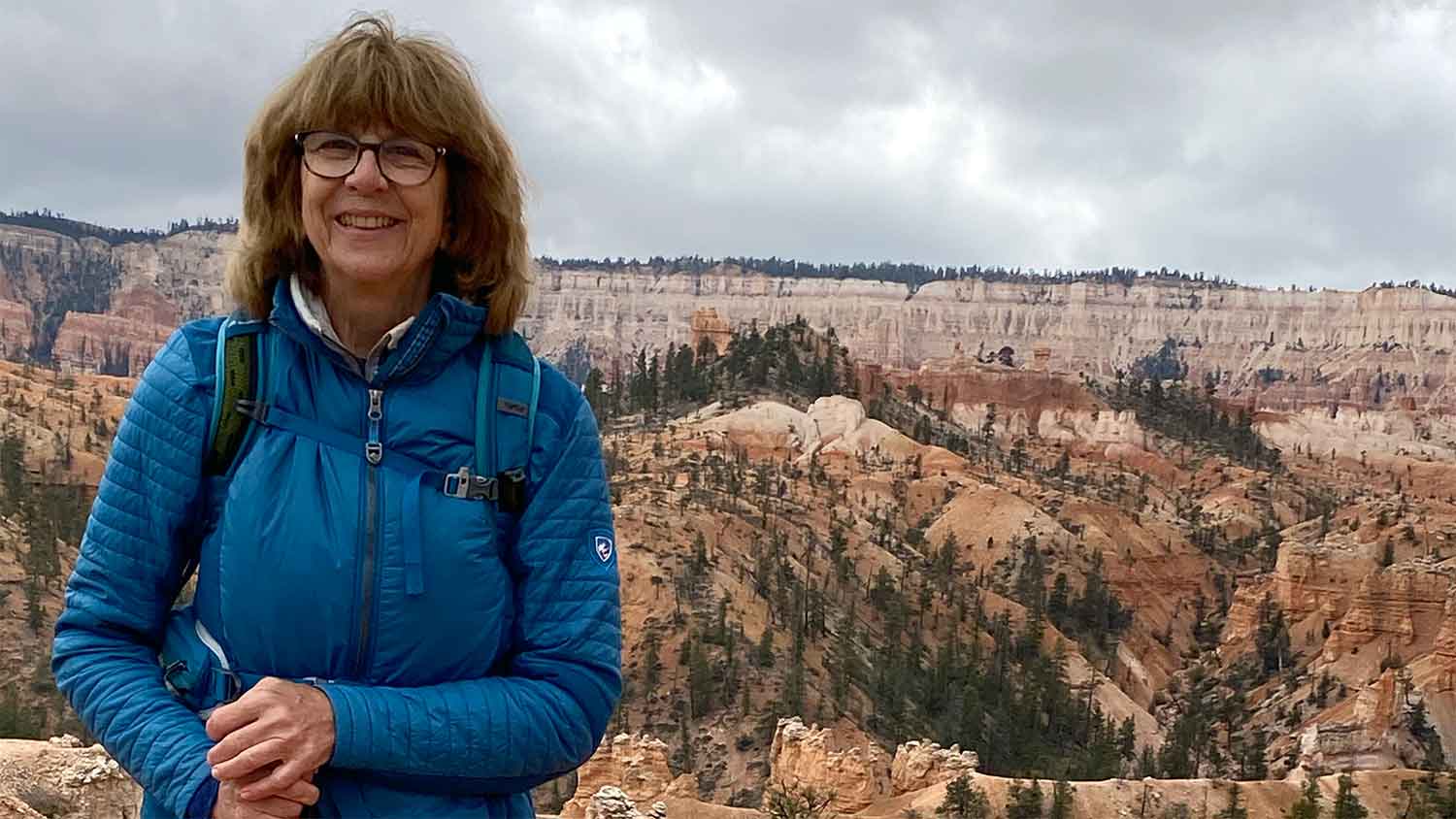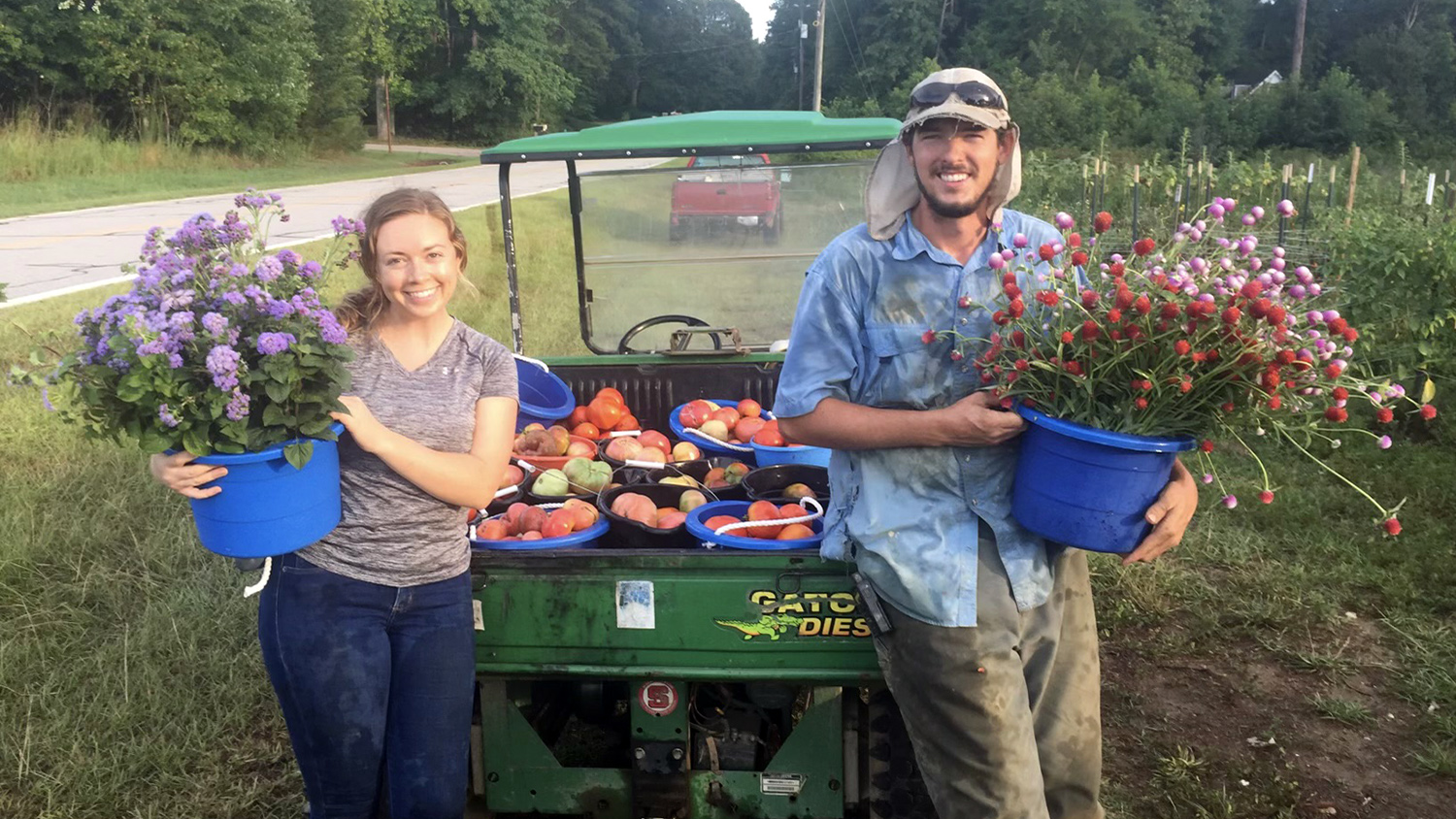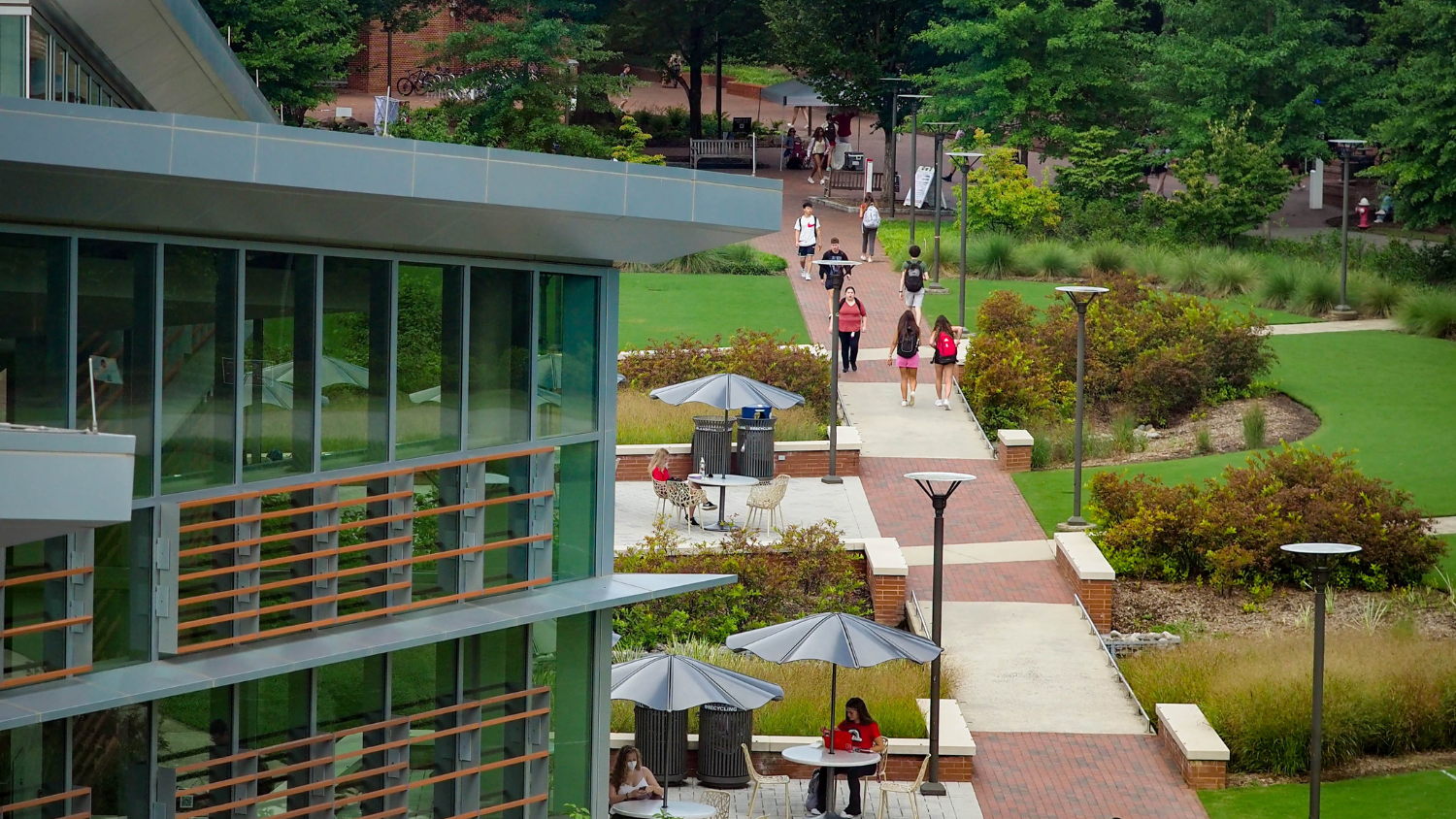Marlee Trandel: Research with Heart

Dr. Marlee Trandel is a postdoctoral research scholar at the Plant for Human Health Institute (PHHI) which focuses on plant production, physiology/postharvest physiology and plant cell wall chemistry. Trandel’s doctoral candidate research into watermelon hollow heart disorder has recently gained recognition for advances in fruit tissue firmness.
Trandel credits working alongside mentors and peers as a source of inspiration which helped shape her as a researcher. While Trandel’s greatest achievement is her Ph.D. from NC State, her goal is to make national and international impacts in the agriculture industry while helping to feed the world.
Tell us about your expertise and interests.
I am currently a Postdoctoral Research Scholar in Horticultural Sciences working under Dr. Penelope Perkins-Veazie and Dr. Massimo Iorizzo at the Plants for Human Health Institute located on the North Carolina Research Campus. I have a Bachelor of Science in animal Science, and Bachelor of Science in Chemistry (2014), Master of Science in horticulture sciences. (2016) from Southern Illinois University Carbondale and I obtained my Ph.D. in 2020 from North Carolina State University.
I have been with NC State for just over five years and my areas of expertise are in horticulture sciences and food chemistry. Specifically, I focus on plant production, physiology/postharvest physiology and plant cell wall chemistry.
Would you give a basic explanation of your research?
My Ph.D. research was centered around grafted and non-grafted triploid (seedless) watermelon relative to an internal fruit disorder known as hollow heart. Seedless watermelons are prone to hollow heart (HH) disorder, where internal flesh develops slight to large cracks and cavities. Watermelon hollow heart is rated on a 1 to 5 scale (1 = no or little hollowing, 5 = large cavity) and has not been studied much due to the sporadic nature of the disorder with growing season and cultivar.
Watermelon genetics, environmental conditions, and pollen deficit are known to induce hollow heart and fruit with lower tissue firmness are more susceptible to the disorder. Grafting with interspecific hybrid squash rootstocks has been found to increase watermelon tissue firmness and may decrease the onset of hollow heart. My research explored how grafting affects watermelon hollow heart relative to tissue firmness, cell density relationships and plant cell wall polysaccharide composition.
‘Liberty’, a hollow heart susceptible seedless cultivar, was grafted to the interspecific hybrid rootstock, bottle gourd rootstock (RS) or was not grafted (control). Hollow heart, fruit tissue firmness, soluble solids content, pH, lycopene, citrulline and arginine were followed. Cell density of watermelon heart tissue was explored via confocal microscopy. Total polysaccharide composition followed sequential polysaccharide extraction, while quantitative cell wall analysis was done to determine how the single sugar carbohydrates link together to build the polysaccharide structure.
My research found that the hollow heart was decreased by about ~30% and heart tissue firmness increased by 2 N in ‘Liberty’ fruit from the interspecific RS. The size and number of fruit cells in the placental tissue increased with the interspecific hybrid RS, indicating tissue density and tissue firmness is related. Few differences were found in compositional assays of fruit tissue. Total pectin data indicated the carbonate soluble fraction was highest in fruit with hollow heart suggesting fruit with hollow heart have higher amounts of de-esterified pectin covalently bound to the cell wall. My research also provided the most comprehensive analysis of cell wall polysaccharides in watermelon.
As a postdoctoral scholar my focus has now shifted to blueberry postharvest research. The emphasis of my research is on blueberry texture and loss of quality. The objectives of my work have been to optimize cell wall quantitative analysis methods for extraction and analysis of the pulp and peel of blueberry cultivars with differing texture and shelf-life, collect quantitative cell wall data and total polysaccharide extraction data and assess the difference in plant cell wall tissue microstructure in crisp (high tissue firmness) and low tissue firmness blueberry cultivars.
Would you share more about your recent award? What was it for?
The award was through the American Society for Horticultural Sciences, and it was the first year the award was given. The award was for outstanding Ph.D. students who have either recently graduated or are in the latter years of their Ph.D. work. The title of the award I received was the “Ph.D. Student Scholarship Award.”
The award recognizes outstanding excellence in academic and scholastic performance in horticulture, participation in extracurricular, leadership and research activities relating to horticulture as well as participation in university and community service. It also recognizes demonstrated commitment to the horticulture science profession and related career fields and how the research has impacted the horticulture industry..
What has been your favorite experience at NC State and CALS?
Some of my favorite experiences at NC State are spending time with my academic mentors. From working side by side with my mentors in the field to optimizing an ambitious cell wall extraction method in the laboratory. I became a stronger scientist and a better person working with my mentors. Other experiences I have really loved include traveling to different research stations to perform research. I was able to work with undergraduate and graduate students, learn about their research and impacts and make lifelong friendships and collaborators.
What impact do you hope to have in your chosen field?
The overall impact that I would like to have in horticulture is to become an academic professor and develop a national and internationally recognized research program, spread knowledge and help feed the world.


